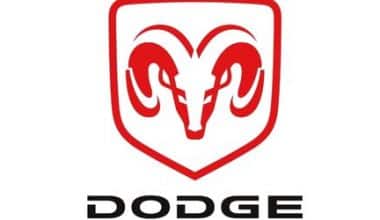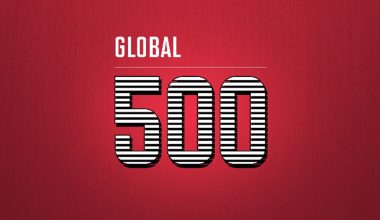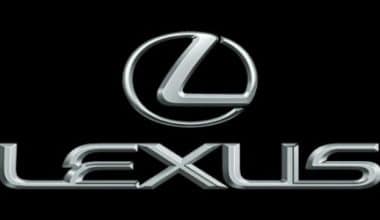Introduced by Coca-Cola in 1961, Sprite has almost become a household name. It is a well-known beverage brand that is recognized for its fresh lemon flavor. Sprite is available in different flavors, such as lime-lemon and cranberry flavors. We’ll discuss the famous Sprite logo in this article, taking into consideration its history and evolution. And if you’re wondering about the caffeine content of Sprite, we’ve also got you covered.
History and Significance Of The Sprite Logo
The most crucial aspect of the Sprite logo is its sense of freshness, which is apparent at the first glance. The color palette and shapes of the brand’s badge’s graphical elements depict the iconic drink’s sparklines and lemon flavor, demonstrating the company’s innovative approach and attention to detail.
Evolution of The Sprite Logo
1961 – 1964: The First Sprite Logo
The Sprite logo, designed in 1961, was made up of green text with dark green jumping letters and long and pointed serifs. The dot above the word “I” was replaced by an eight-pointed lime-green star, which complemented the jagged shapes of the letters and represented the beverage’s flavor.
1964 – 1974
The color of the insignia was changed to red and grass-green in 1964, so half of the letters were one color and half were another. The enlarged star became bolder and red, as did the vertical bar of the “I.”
1974 – 1989
The Sprite logo was redesigned in 1974 with new typography. The inscription was now done in a smooth sans-serif style with softened angles and bold lines, rather than a bold serif typeface. The main text was once again entirely green, but the round solid dot was red.
1989 – 1995
In 1989, the classic Sprite logo with the lemon replacing the dot was unveiled. The light green wordmark has a two-layered motif of lime and lemon positioned horizontally above the “I” in a powerful and beautiful font. This is one of the most recognizable Sprite logos ever made.
1995 – 2003
In 1995, the lime and lemon logo was replaced with an abstract variant – two solid overlapping circles. The icon was positioned above the white diagonal letters on a green and blue gradient background with a striped pattern. In some countries, this symbol can still be found in beverage bottles.
2002 – 2005
The wordmark’s typeface was updated to a more modern one in 2002, sharpening the angles and making the edges more apparent. The white writing was complemented with a narrow blue outline and a bold shadow in the same color, as well as some blue accents. The lime-lemon dot grew smoother and sleeker.
There was also a horizontal variant of this design, with the shadow of the letters converted into a broad blue edge and a lime overlapping a larger lemon above the “I.”
2004 – 2009
The Sprite badge was repositioned horizontally as part of the 2004 redesign. The text was now outlined in larger blue lines, and the yellow dot above the “I” was transformed into a lemon, with a lime overlapping it. Citrus fruits were also drawn horizontally. The inscription’s typography remained unchanged.
2008 – 2021
The wordmark was enhanced once again in 2008, and its smooth white letters with a dark blue outline were set in a slick gradient badge with six-pointed angles and horizontal sides arched to the center. The dot above the “I” was replaced by an enormous lemon with a green bottom.
2014 – 2021
The insignia, which was created in 2008, was simplified in 2014. The gradient colors and glossy textures had vanished, and in their place was a flat green and white graphic with the same huge lemon on top.
2018 – 2021
The lemon was deleted from the logo in 2018, however, the rest of the elements stayed the same and completely replicated the previous Sprite graphic design.
2019 – 2023
The colors of the sprite logo were changed in 2019, and the white wordmark is now positioned atop a bright green badge. The classic lemon logo has been replaced by a solid yellow dot, which is basic in appearance but still conveys the flavor and freshness of the famous drink.
The Sprite Logo Today
In 2023, the only part of the Sprite logo was a solid green logotype that was placed horizontally. The new wordmark’s typeface appears to be fairly similar to the one used in the old badge, with just minor differences. The dot above the “I” has been moved closer to the vertical bar, giving the cut at the end a “smiling” arching shape. The upper half of the letter “R” was also refined slightly.
Font and Colors Of The Sprite Logo
Initially, the Sprite logo used relatively simple symbols: a lemon and lime, which implied the product’s content. However, as the maker began to use multiple flavors, he need a universal insignia. The irregular frame in the shape of a stretched six-pointed star proved to be the best answer. To begin with, it resembles the 1961 logo flash. Second, it can be viewed as a splash of a carbonated beverage that disperses in all directions when the bottle is opened.
The Sprite logo does not employ a distinct font, but rather a group of glyphs created exclusively for this brand. The letters are large, sans-serif, and slanted to the right.
History Of The Sprite Brand
Sprite Facts and Figures
Sprite is a transparent, caffeine-free soft drink with a lemon-lime flavor and a crisp clean taste. The Coca-Cola Company invented and manufactures it. Spite is reported to have started in 1959 as a sort of Fanta drink, which was first introduced in West Germany in 1959 as Fanta Klare Zitrone (“Clear Lemon Fanta”). It should be remembered that Fanta was created during World War II because of supply constraints in Germany, which prevented the corporation from producing Coca-Cola in that region.
According to some sources, Sprite was conceived in 1956 when the Coca-Cola Company produced a tart, clear-colored carbonated soda that was initially sold as both a carbonated beverage and a drink mixer. Sprite appears to have been tested around the United States prior to its official introduction. Sprite was created in the United States of America in 1961 as a competitor to the similar soft drink, 7 Up, which was the only significant lemon-lime soda on the market at the time.
Sprite’s Inventor and Manufacturer
Sprite is manufactured by The Coca-Cola Company, which also invented Sprite. The Coca-Cola Company is a well-known American beverage manufacturer that distributes a variety of beverages, including its well-known flagship product, also known as Coca-Cola. As of 2019, Sprite is the Coca-Cola Company’s second best-selling beverage.
The Year Sprite Was Created
Sprite was initially introduced to the American public in 1961, to great acclaim. According to accounts, Sprite was sold and tested prior to that date. Some suggest that Sprite originated in Germany in 1959 as a type of lemon and lime-flavored Fanta drink. Others claim that the first version of Sprite was created in the United States in 1956 when the Coca-Cola Company created a carbonated clear tart soda and marketed it as both a soft drink and a mixer. They continued testing it and refining its design before launching it as Sprite Soda in 1961.
Slogans
Several slogans have been used to market Sprite. “Obey Your Thirst” is one of Sprite’s most well-known slogans. The slogan “Obey” was sometimes employed as a more simple saying that implied a psychological connection to the product and its previous slogans. “Freedom From Thirst” is another contemporary Sprite tagline. This connects the soda to the idea that Sprite is a refreshing drink and demonstrates a shift in Sprite’s marketing.
Sprite Purchasing Information
Most folks can easily obtain Sprite. It is one of the more widely available drinks in retailers. Sprite is frequently found in stores such as Dollar General and Stop&Shop. Sprite is sold in the United States and in approximately 200 countries. Some Sprite tastes are harder to locate or have been discontinued, but you may occasionally find a limited variety on shop shelves. You may also buy Sprite online, which is an excellent choice for people wishing to buy a large quantity of Sprite at once or for those looking for a specific taste.
Popularity
Sprite quickly gained popularity after its launch in 1961. It was distributed in 39 countries by 1967. The drink’s fan base was primarily composed of young people.
Hip-Hop Relationship
The youth-oriented drink began its tight link with the worlds of hip-hop and basketball in the late 1980s. Urban-oriented artists such as LL Cool J and Missy Elliott were included in the advertising campaigns. This association persists today, with NBA stars such as LeBron James appearing in advertisements.
Different Sprite Favorites Around the World
Sprite is presently accessible in almost 190 countries worldwide. Sprite aficionados can enjoy over 17 various variants of the drink, in addition to the perennial favorite lemon-lime flavor (commonly referred to as “Lymon”). Among the selections are Sprite Zero, Sprite Cherry, Sprite 6 Mix, Sprite Ice, and, over the holidays, Sprite Cranberry.
Sprite Retail Locations
The following stores sell or have sold Sprite:
- Stop & Shop
- Big Y
- ShopRite
- 7-Eleven
- Walmart
- Walgreen’s
- Target
- Rite Aid’s
- Citgo
- Mini Mart S & S
- Market in the City
- Dollar Store
- Market Street Market
- CVS
- Sam’s
- Krauszer’s Food Markets
Ingredients Contained In Sprite
Sprite’s ingredients are listed below.
- Carbonated water
- Sugar
- Citrus Juice
- Sweeteners (Acesulfame K, Aspartame) (Acesulfame K, Aspartame)
- Acidity regulator (Sodium Citrate)
- Lemon and lime natural flavorings
- Sprite’s Marketing and Advertising
Advertising and Marketing
Sprite put a lot of thought into its advertising and marketing for a soft drink, paying close attention to its marketing image before it hit the shelves. Many potential bottle designs were investigated, the logo was examined under a microscope, and a large amount of data was combed through. Sprite was a drink that its backers wanted to get right. Sprite’s design team paid close attention to the color of its trademark, opting for green, a color that conveys “freshness.” Sprite soda’s advertising and marketing efforts emphasize freshness, with phrases such as “Obey Your Thirst,” “Obey,” and “Freedom From Thirst.”
Sprite advertises in a variety of ways, including numerous television advertisements starring the soda and a character named Miles Thirst. In addition, Sprite has used social media marketing such as Snapchat barcodes on soda cans to make Sprite more intriguing and entertaining for consumers.
Sprite used to promote more to adults when it initially came out, but over time, its advertising and marketing approach has shifted to teens and young adults, offering them a refreshing drink with marketing techniques and outlooks that appeal to the tastes of today’s youths and young adults. It has utilized billboards that tell jokes to passers-by to help sell its brand of soft-drink goods, with the hope of entertaining people and generating interest in Sprite. Sprite also promotes soft drinks through radio and newspaper commercials. Visual images of Sprite are frequently structured and focused in just the right way to evoke the impression that Sprite provides thirst relief, and this angle of Sprite’s advertising has been quite successful in marketing the beverage.
Packaging for Sprite
Sprite frequently employs green, blue, and silver tones, frequently combining the color schemes. The typical bottle and can of Sprite soda are colored green and blue, with the blues being heavier at the top and the greens being heavier at the bottom; the silver-colored area often makes up the center area of the container the soda is in, and the logo “Sprite” is generally located in the center of the bottle or can is generally colored silver or white.
Lemon is frequently, though not always, portrayed anywhere on the bottle or can of the average container of Sprite soda. The lemon on the package, as well as the dominant green and blue hues, are most likely an attempt to convey freshness and the trait of being refreshing to the consumer. In some circumstances, the yellow lemon represented on the can is rather huge, taking up a major portion of the packaging art area; but, in other cases, it is almost unnoticeable.
In general, green is the predominant color used by Sprite for its packaging style; however, alternate flavors and variants of Sprite do not always feature green, or just utilize a little amount of it. They will, however, frequently use hues such as silver, white, or “clear,” most likely to maintain the notion of striving to appear refreshed. Sprite cranberry Zero, for example, has very little green in its packaging and container material coloring; instead, it employs silver, white, and “clear” as its dominant main colors for its appearance, along with some red text to supposedly indicate that it is cranberry flavored. Some Sprite sodas, such as Sprite Zero, have employed packaging with blue as the primary hue, in addition to clear plastic bottling; this may be another attempt to express a refreshing aesthetic to the consumer.
Sprite’s Container Sizes and Types
Sprite soda is available in a number of container types and sizes. It has been available in glass, plastic, and aluminum cans. Sprite soda has been marketed in glass bottles in 8 fl oz and 12 fl oz sizes. Sprite plastic bottles were available in 1, 1.5, and 2-liter sizes, as well as 20- and 12-ounce quantities. Aluminum can containers have been available in 12 fl oz, 16 fl oz, and 7.5 fl oz “mini” sizes.
Cranberry Sprite
Cranberry Sprite was a Sprite flavor that was available for a brief period each winter season in the United States from 2013 to 2018. Sprite Winter Spiced Cranberry was renamed Sprite Winter Spiced Cranberry in 2019.
Description
Sprite Cranberry, as the name suggests, was a Sprite Cranberry taste, comparable to Sprite Winter Spiced Cranberry. It has a transparent color.
Reception
The flavor’s taste was massively successful, reaching legendary internet meme status from 2018 onwards.
Since the reformulation of Sprite Winter Spiced Cranberry in 2019, it has received a considerable reaction from most individuals who preferred the old Sprite Cranberry flavor, with some even going so far as to call for the original to be reinstated.
Outcome
Aside from the Sprite Winter Spiced Cranberry, which has been available on a daily basis in the United States for many years, there has been no new worldwide distribution of the original Sprite Cranberry in recent years, nor has there been a re-release of the original Sprite Cranberry.
History
The United States
Sprite Cranberry was first available in stores for a limited time during the winter months of 2013 to 2018.
Sprite Winter Spiced Cranberry was renamed Sprite Winter Spiced Cranberry in 2019.
Zero Sprite Cranberry
Sprite Cranberry Zero was first available in stores alongside its normal counterpart for a limited time during the winter months of 2013 to 2018.
International Distribution of Sprite
Canada
Sprite Cranberry was introduced in Canada in 2015, following its release in the United States in 2013. After two years of popular demand, The Canadian Coca-Cola Company decided to reintroduce the flavor for a limited period in most Canadian provinces in 2017 and then again in 2019 for the winter season.
As of November 2021, it is unknown whether Sprite Cranberry will return for a limited period or not.
Japan
Sprite Cranberry was introduced in Japan in 2017. Aside from a YouTube video reviewing it, not much is known about its Japanese release. It is unknown whether Sprite Cranberry will still be available in November 2021.
Belgium
For whatever reason, it was only available as a Zero Sugar variation in Belgium for a limited time in 2017. There isn’t much information available regarding this particular release.
Puerto Rico
On November 12th, 2018, the official Sprite Puerto Rico Facebook page revealed that Puerto Rico will be getting a new flavor called Sprite Cranberry, which will be distributed as samples to lucky fans before becoming a permanent flavor. It is still manufactured in that territory of the United States as of November 2021.
Jamaica
On September 9th, 2020, the official Coca-Cola Journey page stated that Jamaica is getting a new flavor called Sprite Cranberry, which will be available for a brief time in late 2020 before being withdrawn.
Is There Caffeine in Sprite?
Sprite, a lemon-lime soda produced by Coca-Cola, is popular for its refreshing, citrusy flavor.
Still, some sodas contain a lot of caffeine, and you may be wondering if Sprite is one of them, especially if you’re attempting to restrict your caffeine intake. Let’s take a look at the nutritive value of Sprite.
Caffeine and Nutritive Value Of Sprite
Sprite, like most other non-cola sodas, is caffeine-free.
The key ingredients in Sprite are water, high-fructose corn syrup, and natural lemon and lime flavors. It also contains preservatives such as citric acid, sodium citrate, and sodium benzoate.
Even though Sprite does not contain caffeine, it is high in sugar and may raise your energy levels in a similar way to caffeine.
A 12-ounce (375-ml) can of Sprite contains 140 calories and 38 grams of carbohydrates, all of which are sugar.
Most people experience a quick spike in blood sugar after drinking it. As a result, individuals may experience a surge of energy followed by a collapse, which may include jitters and/or worries.
Caffeine overdose can also cause feelings of anxiety, nervousness, or jitteriness.
As a result, while Sprite does not contain caffeine, it may deliver an energy boost and exert effects similar to caffeine when consumed in excess.
In essence, Sprite is a transparent, lemon-lime drink that lacks caffeine but is heavy in sugar. As a result, it may deliver a burst of energy, similar to caffeine.
Why We Should Take Caution
Most people should restrict their intake of Sprite and other carbonated beverages.
Excessive added sugar consumption has been related to an increased risk of weight gain, diabetes, heart disease, and other health problems.
The American Heart Association currently recommends a daily maximum of 36 grams (9 teaspoons) of added sugar for adult men and 25 grams (6 teaspoons) of added sugar for adult women.
12 ounces (375 mL) of Sprite, which contains 38 grams of added sugar, would surpass these guidelines.
Drinking Sprite and other sugar-sweetened beverages should therefore be reduced in a healthy diet.
Furthermore, those with diabetes or other blood sugar management difficulties should be extremely cautious about drinking Sprite, especially if they often consume other foods heavy in added sugars.
Just one 12-ounce (375-ml) can of Sprite contains more added sugar than is recommended per day. As a result, you should reduce your consumption of Sprite and other sugary sodas.
Sprite Zero Sugar, Anyone?
Sprite Zero Sugar is also caffeine-free, but instead of sugar, it contains the artificial sweetener aspartame.
Because it contains no added sugar, folks who desire to reduce their sugar intake may assume it is a healthier option.
Still, there is a scarcity of studies on the long-term safety of artificial sweeteners. Studies on the impact of artificial sweeteners on hunger, weight gain, and the risk of cancer and diabetes have been generally equivocal.
As a result, additional research is required before suggesting Sprite Zero Sugar as a healthier option to regular Sprite.
Instead of sugar, Sprite Zero Sugar contains the artificial sweetener aspartame. While it’s commonly assumed to be a healthier alternative to traditional Sprite, human studies on the effects of artificial sweeteners have proven inconclusive.
Healthier Alternatives To Sprite
If you adore Sprite but want to cut back, there are various healthier alternatives to consider.
To prepare your own sugar-free lemon-lime drink, blend club soda with fresh lemon and lime juice.
You might also enjoy naturally flavored carbonated drinks with no added sugars, such as La Croix.
If you’re not avoiding caffeine and drinking Sprite for its sugary energy boost, consider tea or coffee instead. These beverages contain caffeine but are naturally sugar-free.
If you enjoy Sprite but want to cut back on sugar, consider naturally flavored sparkling water. If you don’t want to skip the caffeine and drink Sprite for energy, try tea or coffee instead.
Finally,
Sprite is a non-caffeinated lemon-lime beverage.
Nonetheless, its high added sugar content might deliver a rapid energy boost. However, Sprite and other sugary sodas should be used in moderation as part of a healthy diet.
Although Sprite Zero Sugar is sugar-free, the health consequences of the artificial sweetener it contains have not been thoroughly researched, and healthier alternatives are available.
Lemon-lime sparkling water, for example, is a healthier option that is also caffeine-free. If you want something with caffeine but no added sugars, try unsweetened coffee or tea.
Is Sprite Healthier Than Coke?
The nutrition information for Sprite and Coke is the same, therefore one is not always better than the other. Sprite is preferable since it has less caffeine, but it also contains artificial coloring, which can cause some ailments when drank in excessive quantities.
Sprite Facts You Should Know
#1. Sprite is manufactured by Coca-Cola.
The Coca-Cola business owns and manufactures the Sprite brand.
#2. It was created in West Germany.
Fanta Klare Zitrone (Clear Lemon Fanta) was created in West Germany for the Coca-Cola Company in 1959. Sprite was released to the United States as Fanta Klare Zitrone two years later, in 1961.
#3. Why was it created?
With the increasing success of 7UP, Coca-Cola felt compelled to release its own lemon-based soda.
#4. What exactly is Lymon?
Lymon is frequently used to describe the flavor of Sprite; what exactly is it? Lymon is a lemon and lime blend.
#5. It’s a Hangover Treatment
Researchers at Sun Yat-Sen University in Guangzhou, China, tested 57 different drinks to determine if any of them alleviated hangover symptoms. The researchers discovered that Sprite can really help with a hangover because it reduces the body’s exposure to acetaldehyde, the chemical responsible for symptoms including nausea, vomiting, and headaches.
#6. Sprite is sold in almost every country on the planet.
Sprite may be found in 190 of the world’s 196 countries.
#7. Sprite Cakes Are Popular
Everyone enjoys it as a beverage, but it appears that this soda is a key element in some of the most delectable desserts available. Sprite pound cakes are a thing, and people appear to be obsessed with them.
#8. A Texas grandmother survived two days on Sprite alone.
A 75-year-old grandma became stranded in a ravine for two days when her automobile flew off the road while attempting to avoid an animal. She had been stuck in the car for two days and the only thing she had with her were three Sprite sodas she had brought with her on the trip. She was able to survive for two days by drinking Sprite and unclean runoff water.
#9. Sprite contains less sugar in Europe.
In European nations such as France, Ireland, the United Kingdom, and the Netherlands, Sprite contains 30% less sugar than Sprite in the United States. Sprite France reduced 30% of the sugar in 2012 and replaced it with Stevia, which is sweeter and lowers the soda’s calorie burden.
#10. It heavily promotes the NBA.
“Grant Hill Drinks Sprite” was one of the company’s longest-running advertising campaigns (it overlapped with its “Obey Your Thirst” campaign). Grant Hill, a prominent basketball player in the 1990s, would frequently take Sprite, which would give him incredible playing abilities on the floor. Others would drink and fail spectacularly.
#11. Do You Remember the “Jooky” Advertising Campaign?
In the 1990s, there was a short-lived “Jooky” advertising campaign. The advertisement would make fun of other soft drink companies’ over-the-top advertising practices. “Image is nothing.” was the tagline for these commercials. Thirst dictates everything. Follow your thirst.
#12. LeBron James had his own Sprite flavor.
LeBron James, the world’s most popular basketball player, collaborated with Sprite to produce his own limited edition drink, 6 Mix. Sprite 6 Mix was a cherry and orange-flavored beverage that was the company’s first collaboration with a celebrity.
#13. There are 17 variants available.
While the original version has been a classic for years, other variants have been developed.
Sprite Zero, Sprite Remix, Sprite Ice Sprite Duo, Sprite on Fire, Sprite Super Lemon, Sprite Dry Lemon, Sprite Lemon Lime Herb, Sprite 3G, Sprite Recharge, Chinotto, Sprite Super Chilled, Sprite Green, Sprite Cranberry, Sprite 6 Mix, Sprite Blast, and Sprite Tropical are just a few examples.
#14. Popular Graffiti Artist Created Limited Edition Cans
Coca-Cola commissioned popular graffiti artist Temper to design limited edition Sprite cans in 2000. The design was featured on over 100 million cans throughout Europe, making it the most successful designer can in the UK.
#15. Popular rap lyrics were printed on Sprite cans.
Sprite released limited-edition cans with inspirational lyrics from rap superstars such as Drake, Nas, The Notorious B.I.G., and Rakim in 2015. The artists chosen were chosen “based on their reputation for being true to themselves through their music and advancing the culture,” according to the press release.
#16. It is beneficial for an upset stomach.
Sprite is a popular home treatment for an upset stomach. Clear soda is effective at removing gas from your stomach. Sprite will frequently allow you to burp, which will provide relief to someone suffering from an upset stomach.
What Does Calling Someone A Sprite Mean?
A Sprite refers to a small or elusive supernatural being, more like an elf.
Is there any meaning behind the green color in the Sprite logo?
The green color in the Sprite logo is associated with the brand’s refreshing and crisp taste. It also represents the brand’s focus on natural ingredients and its connection to nature.
Are there any restrictions on using the Sprite logo internationally?
The use of the Sprite logo may be subject to certain restrictions depending on the country. It is important to check with the local laws and regulations before using the logo and to obtain permission from the brand owner if necessary.
How should the sprite logo be positioned when used on different mediums?
When using the Sprite logo on different mediums, it is important to follow the guidelines provided by the brand. This includes ensuring that the logo is positioned in a clear and prominent location and that it is not distorted or modified in any way.
How can I get the Sprite logo for my merchandise?
To get the sprite logo for your merchandise, you will need to request permission from the brand and follow their guidelines for usage. It is also likely that there are authorized vendors who sell merchandise featuring the sprite logo.
Are there any variations of the sprite logo?
There may be different variations of the sprite logo used for different purposes and mediums, but the core design and elements of the logo should remain consistent.
How can I request permission to use the sprite logo?
To request permission to use the sprite logo, you can contact the brand directly through their website or by phone. You may also be required to provide information about your intended use of the logo and agree to follow the brand’s guidelines for usage.
Related Articles
- PRODUCT LINE: All you should know with Practical Examples(+ Free Tips)
- What Makes Soda Pdf the Best Tool for Your Business?
- MUSTARD BRANDS: 19+ Best German Honey Mustard Brands Worldwide
- THE COCA-COLA HISTORY: Success Facts
- SEASONAL WORK: What It Is, Types, and How to Find one
- PATREON LOGO: History and General Overview






